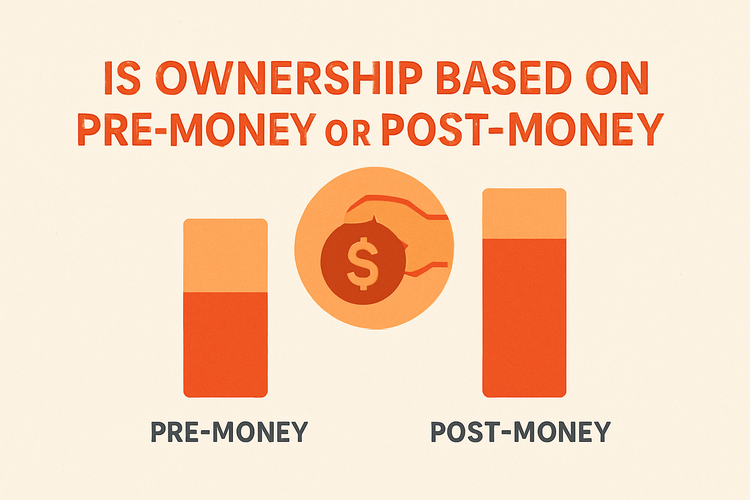Is Ownership Based On Pre Money Or Post Money

Understanding Ownership in Equity Deals: Pre-Money vs. Post-Money
Ownership calculation in equity financing depends on how the valuation is framed—either pre-money or post-money. Each method gives a different picture of equity share and can significantly impact founders and investors alike.
Pre-money valuation refers to the company's value before new capital is introduced, while post-money valuation includes that new capital. Knowing the distinction is essential when negotiating equity because it directly affects how much of the business each party ends up owning. If not understood clearly, even small miscommunications can cause major misunderstandings about share ownership.
What is Pre-Money Valuation?
Pre-money valuation is the estimated worth of a company before it receives outside investment or financing. It sets the baseline for how much ownership the new investors receive in exchange for their funding.
For example, if a business is valued at £2 million pre-money and an investor puts in £500,000, the post-money valuation becomes £2.5 million. This means the investor would receive 20% equity (£500k / £2.5m), not 25% (£500k / £2m). The misunderstanding often arises when founders assume the investment is being calculated against the pre-money amount, whereas investors look at the final stake based on the post-money figure.
For any founders or early investors, understanding this concept is crucial to avoid diluted ownership. Strategic discussions around this metric help prevent conflicts and ensure fair equity distribution.
Post-Money Valuation and Its Importance
Post-money valuation is the company’s estimated worth immediately after an investment round. This figure includes the capital just raised, making it the primary reference point for calculating investor ownership.
Using the same example, if a company has a pre-money valuation of £2 million and raises £500,000, its post-money valuation is £2.5 million. This valuation clarifies the actual stake the new investor owns post-transaction. It’s typically the standard that investors use to assess the value of their equity. Founders too must prioritize clarity on this distinction in term sheets to ensure transparency and fairness.
In practical terms, understanding post-money valuation helps in making subsequent funding rounds smoother. Since each round affects not just the valuation but also governance and voting control, having clear and agreed-upon post-money calculations is fundamental to long-term equity strategy. When combined with robust construction support systems such as joist hangers or post bases, this strategic base can propel the business forward operationally and structurally.
How Ownership Changes with Each Funding Round
Each new investment round changes the equity landscape. Existing shareholders experience dilution unless they also invest proportionally in the new round. Therefore, founders must be cautious about how repeated financings will affect their stake.
Ownership dilution is often one of the more contentious aspects of startup financing. For instance, if a founder owns 50% of the company before a new £1 million investment at a £4 million post-money valuation, they’ll no longer hold half the company. Their stake is immediately reduced based on the influx of new equity holders. This is why modeling future dilution over multiple rounds is essential, especially when planning exit strategies or long-term control.
Investors typically want assurance on ownership implications over time. Tools like pro forma cap tables help visualize these shifts. Ensuring the use of professional-grade building connectors like glulam timber connectors helps metaphorically emphasize stability and precision not only in your plantations but also in your capitalization strategy.
Negotiating Equity: Who Wins from Post-Money Terms?
In most cases, investors prefer post-money valuation because it simplifies their equity calculation. It offers a more accurate estimate of what their investment will control in terms of voting and exit opportunities.
Founders, however, may lean toward pre-money discussions to maintain focus on what the business is worth independently without the influence of incoming capital. This can help push valuations higher and reduce perceived dilution. However, it’s essential that both parties have aligned expectations aligned early in the process. Any mismatch in understanding can lead to friction when executing contracts or aligning on board compositions.
Ultimately, who ‘wins’ in post-money terms comes down to negotiation leverage and how clear the communication is about ownership structures. For founders building toward structural and cultural integrity, using strong foundation components like restraint straps and angle brackets can be symbolic of underpinning strong equity agreements.
